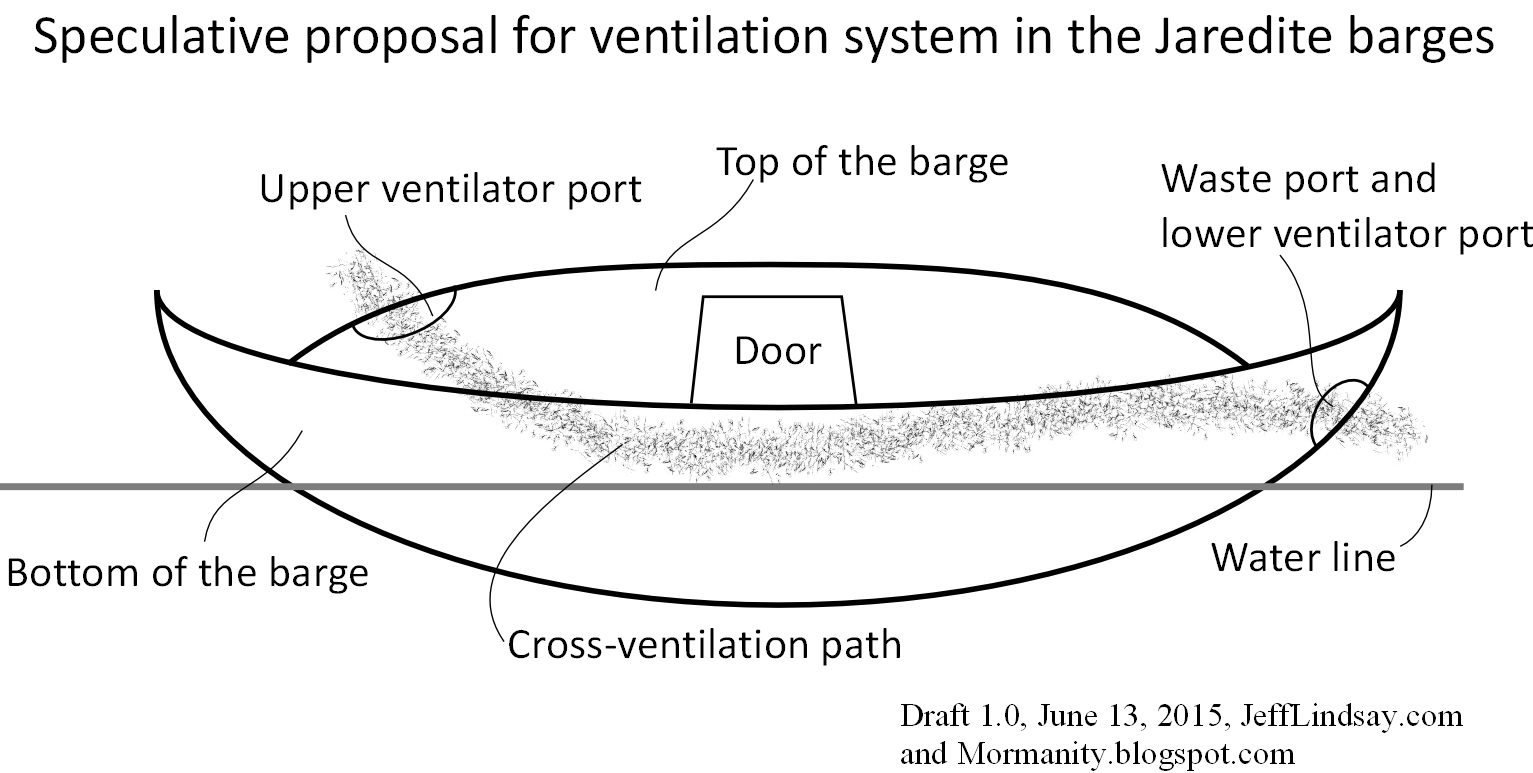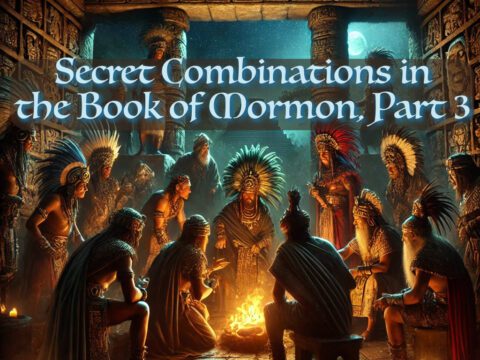The Book of Mormon as dictated by Joseph Smith contains a wide spectrum of Early Modern English (EModE) elements that distinguish it from the language of the King James Bible (KJB) in many surprising ways. Extensive work by Royal Skousen and Stanford Carmack has made this point clear. It was a surprise to them as well as to all of us because there is nothing in our faith or in the story of the translation of the Book of Mormon that would naturally lead us to expect the presence of EModE features other than what we have in the KJB. These distinguishing features include archaic vocabulary, the way “did” is employed in the past tense, the way relative pronouns are used, the characteristics of complementation, the use of auxiliary verbs, command syntax, and numerous other details. These finds were not driven by apologetics, but by the data. It’s simply a fact that the language of the Book of Mormon cannot be explained by Joseph Smith trying to imitate the KJB or just relying on his own Yankee dialect. Something else is going on.
The EModE elements span a variety of time periods, so the data does not imply that some native EModE speaker from, say, Shakespeare’s era did the translation. The English of the Book of Mormon would have many unrecognizable words if that were the case. In further contrast, Book of Mormon language includes aspects from a variety of EModE periods as well as some distinctively modern features. The story of language in the Book of Mormon is complex and nuanced.
The unanswered question for all of us is why and how did this happen? We still don’t know. But one theory I’ve heard or read — though I struggle to recall the source — is that the use of EModE may offer a precision or clarity that facilitates translation into many other languages. I found one source on this that might be where I picked up that idea. Kirk Magleby’s blog post “English in the Book of Mormon,” Book of Mormon Resources, March 23, 2015, describes a presentation from Stanford Carmack in 2015 where during Q&A, people asked about the reason for EModE. While he has consistently pointed out that we don’t know, he did mention the “plainness” of the English as a potential benefit. Here is an excerpt from Kirk’s notes from that presentation:
The question on everyone’s’ lips after Carmack’s rapid-fire delivery was why? Why would the Lord have revealed a text in 1829 in a language that had not been spoken anywhere on earth for several generations? Carmack gave four cogent answers:
- KJV affinity. This language has an old-fashioned biblical feel.
- Witness of the gift and power of God. This makes the Book of Mormon miracle even that much more astonishing. No other 19th century work uses EModE syntax, not even pseudo biblical texts that are consciously mimicking KJV style. This is simply beyond human capability.
- Translation facility. The Book of Mormon is translation literature. The Lord knew this text would be widely translated (113 languages currently). Shakespeare and the Bible are the most translated bodies of literature in history, so EModE provides a good base text to support translations.
- Plainness. Even though EModE syntax sounds odd, even erroneous to modern ears, the meaning is seldom in doubt. Some of modern English’s ambiguities were not yet in the language in the EModE era.
I think the last two ideas that Magleby gleaned, “plainness” and “translation facility,” both may support the idea that the Book of Mormon’s particular blend of EModE and modern English may be useful in creating translations in many languages.
Prior to finding Magleby’s post today, I asked Dr. Carmack about the source of the idea I recalled hearing regarding how EModE might make the Book of Mormon text easier to translate. He said he doesn’t recall that being in print, but he is interested in the potential benefits of EModE complementation. In Carmack’s reply, he first mentioned the work of R.M.W. Dixon and Alexandra Y. Aikhenvald (eds.), Complementation: A Cross-Linguistic Typology (Oxford: Oxford, 2006; online ed, Oxford Academic, 2023), https://doi.org/10.1093/oso/9780199297870.001.0001. In the first chapter, “Complement Clauses and Complementation Strategies in Typological Perspective” by R.M.W. Dixon (chapter 1 can be read at Amazon), we read:
It seems that the majority of the world’s languages have complement clauses. But a sizeable number lack this grammatical construction. Such languages still do have some grammatical mechanism for stating what a proposition is which is seen, heard, believed, known, liked, etc. These mechanisms are called complementation strategies. (p. 1)
By the way, I really like the ability of English to provide complex information in complement clauses, especially beginning with “that.” The absence of such structures in Chinese is part of what makes it such a difficult language, especially difficult for machine translation. Instead of saying ” I really liked the speaker that wore the ridiculous big red hat that kept falling off his head,” for Chinese you typically have to stick a lot of information about a noun right before the noun: “I really liked the-wearing-a-ridiculous-big-red-hat and also hat-falling-off-his-head [possessive] man.” When I later began studying another tonal language, White Hmong, which I expected to be a lot like Chinese since it sounded somewhat similar and had some common words, I was so relieved to find out that it had complement clauses and used a word “tias” very much like our “that” to begin complement clauses. Hurray! And now that my wife and I are working on Swahili, in spite of its super complex grammar, it’s a relief to have “kwamba” and forms of “ambayo” to begin many complement clauses.
A fascinating thing about the allegedly “bad grammar” of the original Book of Mormon is that it is mostly acceptable grammar from the Early Modern English era, and that it uses a lot of complementation in ways that can sound awkward to us, but are easily understood and very clear in expressing meaning. This might be a boon for translating into any language, but certainly might be helpful for languages that are geared to take similar clauses already — apparently a majority of the world’s languages. The other languages use various strategies to deal with that, like complex clauses before a noun in Chinese. But it’s nice to have complementation to begin with.
After quoting the passage from Dixon, Carmack noted the significance of the Book of Mormon’s unusually high rate of complementation relative to the KJB, and noted the need for more research in this area:
This quote is relevant because complement clauses in the Book of Mormon are very frequent. They usually begin with that, and this is the fourth most common word in the Book of Mormon, which is extremely uncommon for an English text, and mostly due to the large number of complement clauses in the Book of Mormon. This complementation clause rate is higher than it is in the King James Bible. Many languages of the world employ complement clauses at a higher rate than English, and so the Book of Mormon, with its atypical English is this regard, is closer to the complement clause usage rate of many target translation languages. For such languages, this aspect of the Book of Mormon’s archaic sentence structure facilitates the process of translation.
This is a topic that needs to be studied, but it can be proposed as likely to be accurate. (I know that it holds for the Romance languages descended from Latin.)
Another thing of note is that there is a low rate of ellipsis [leaving out words that can be inferred from the context] in the Book of Mormon for various parts of speech like prepositions and articles. This makes translation more straightforward than otherwise, since it reduces the guesswork that ellipsis sometimes causes. The Book of Mormon might be similar to the King James Bible in this regard; I haven’t compared them closely. (The hypothesis that Early Modern English employed less ellipsis than modern English would need to be studied and verified.) However, I have compared Joseph Smith’s early writings with the Book of Mormon, finding that the rate of ellipsis of articles is higher in his writings.
There are some interesting areas to explore related to complementation, ellipsis, and other grammatical aspects of the long-maligned grammar of the Book of Mormon.
However, translators of the Book of Mormon into other languages also face challenges from the archaic aspects of Book of Mormon language. There are a variety of cases where a word that Joseph dictated apparently carries a meaning that is not common today. Royal Skousen has provided detailed analysis of such words. In correspondence with me, he pointed out that this aspect of Book of Mormon language can be challenging for translators:
For instance, a given which can stand for ‘who(m)’ [human] or ‘that, which’ [non-human]. The B of M retains all the original which’s and their ambiguity, but translating into modern English or other languages usually requires disambiguation. You can find this discussion in Grammatical Variation, parts 1 and 2 of volume 3, under which.
The archaic vocabulary gives alternative meanings to translations. When Jacob refers to getting his “errand” from the Lord, it probably takes the earlier meaning of ‘message’ rather than the more recent ‘task’. And translating errand as message would make the whole passage, over two chapters, read more consistently. [link added by J.L.]
So there are pros and cons to the EModE-rich language of the Book of Mormon, and still much to explore in trying to understand why it is there so strongly in the first place, and so different in many ways from the KJB and from pseudo-biblical texts. Your thoughts? Other theories and works we should consider?












“ Joseph Smith trying to imitate the KJB or just relying on his own Yankee dialect. ”
Correct, it was both, complex and nuanced
What is so “complex and nuanced” about your interpretation of the facts? Seems to me you’re the one oversimplifying by hand-waving at the actual subject matter.